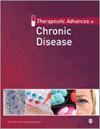HDAC抑制剂在心肺纤维化中的抗纤维化作用
IF 2.8
3区 医学
Q2 PHARMACOLOGY & PHARMACY
引用次数: 82
摘要
纤维化通常是由伤口修复失调引起的,其特征是瘢痕组织过多。这是一个机制不明确的复杂过程。越来越多的证据表明,包括组蛋白乙酰化在内的表观遗传学改变在这一过程中发挥着关键作用。组蛋白乙酰化由组蛋白乙酰转移酶(HATs)和组蛋白脱乙酰酶(HDACs)控制。HDAC是从组蛋白和非组蛋白中去除乙酰基的酶。在纤维化疾病中观察到异常HDAC活性,包括心脏和肺纤维化。HDAC抑制剂(HDACIs)是阻断HDAC功能的分子。HDACIs已在各种肿瘤中得到广泛研究。目前,美国食品和药物管理局批准了四种HDAC用于治疗癌症,但没有一种用于治疗纤维化疾病。来自体外和体内临床前研究的新证据表明,HDACIs在预防或逆转纤维形成方面具有有益作用。在这篇综述中,我们总结了HDACs在心脏和肺纤维化发病机制中作用的最新发现,并强调了HDACIs在这两种纤维化疾病中的潜在应用。本文章由计算机程序翻译,如有差异,请以英文原文为准。
HDAC inhibitors as antifibrotic drugs in cardiac and pulmonary fibrosis
Fibrosis usually results from dysregulated wound repair and is characterized by excessive scar tissue. It is a complex process with unclear mechanisms. Accumulating evidence indicates that epigenetic alterations, including histone acetylation, play a pivotal role in this process. Histone acetylation is governed by histone acetyltransferases (HATs) and histone deacetylases (HDACs). HDACs are enzymes that remove the acetyl groups from both histone and nonhistone proteins. Aberrant HDAC activities are observed in fibrotic diseases, including cardiac and pulmonary fibrosis. HDAC inhibitors (HDACIs) are molecules that block HDAC functions. HDACIs have been studied extensively in a variety of tumors. Currently, there are four HDACIs approved by the US Food and Drug Administration for cancer treatment yet none for fibrotic diseases. Emerging evidence from in vitro and in vivo preclinical studies has presented beneficial effects of HDACIs in preventing or reversing fibrogenesis. In this review, we summarize the latest findings of the roles of HDACs in the pathogenesis of cardiac and pulmonary fibrosis and highlight the potential applications of HDACIs in these two fibrotic diseases.
求助全文
通过发布文献求助,成功后即可免费获取论文全文。
去求助
来源期刊

Therapeutic Advances in Chronic Disease
Medicine-Medicine (miscellaneous)
CiteScore
6.20
自引率
0.00%
发文量
108
审稿时长
12 weeks
期刊介绍:
Therapeutic Advances in Chronic Disease publishes the highest quality peer-reviewed research, reviews and scholarly comment in the drug treatment of all chronic diseases. The journal has a strong clinical and pharmacological focus and is aimed at clinicians and researchers involved in the medical treatment of chronic disease, providing a forum in print and online for publishing the highest quality articles in this area.
 求助内容:
求助内容: 应助结果提醒方式:
应助结果提醒方式:


